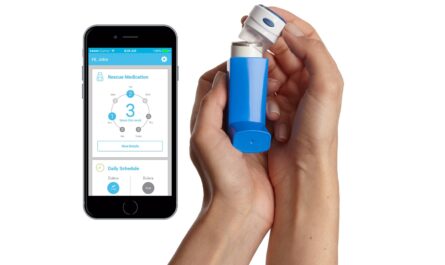Use of Consumables in Sequencing Consumables Industry
Next-generation sequencing instruments require a significant amount of consumables in order to function. Consumables provide the reagents and other components necessary for sample preparation, library generation, sequencing runs, and data analysis. Key consumables used in sequencing workflows include sample preparation kits, library preparation kits, sequencing kits or reagents, workflow automation consumables, and data storage consumables.
Sample preparation kits are used in the initial processing and extraction of DNA or RNA from biological samples such as blood, tissue, or cells. Library preparation kits then take the purified nucleic acids and prepare them for sequencing by fragmenting the DNA or RNA and adding adapter sequences and indexes. Sequencing kits or reagent cartridges provide the fluorescently labeled nucleotides and enzymes needed for each sequencing cycle. Workflow automation consumables such as plates, tubes, tips, and robotics consumables assist in liquid handling steps. Finally, large amounts of data storage are required as sequencing generates terabytes worth of data per run.
Growth of the Sequencing Consumables Industry
The market for sequencing consumables has grown tremendously alongside growth in the sequencing instrument market. According to a recent report by Genomics Inc., the global sequencing consumables market was valued at $4.2 billion in 2020 and is expected to grow at a compound annual growth rate of 15.8% between 2021-2026. This rapid growth is driven by decreasing sequencing costs, expanding clinical and research applications of sequencing technologies, and improvements in sequencing platforms that allow for higher throughput.
As sequencing costs decline and clinical applications expand, the utilization of sequencing instruments continues to rise globally. This increased utilization directly leads to higher demand for sequencing consumables. From 2016 to 2020, sequencing instrument sales grew at over 20% per year on average. This rapid proliferation of sequencers requires a continuous replenishment of consumables to perform the growing number of sequencing runs.
Regions with the Largest Markets for Sequencing Consumables
North America currently dominates the sequencing consumables accounting for over 40% of revenue. Significant government and private sector investment in genomics and biomedical research has promoted early adoption of next-generation sequencing technologies in the United States and Canada. Presence of global life sciences leaders and large sequencing instrument manufacturers such as Illumina, Thermo Fisher Scientific, and Qiagen has also encouraged growth.
However, Asia Pacific is poised to be the fastest growing regional market, projected to expand at a CAGR of 18.4% through 2026. Countries like China, Japan, South Korea, India, and Australia are dedicating increased funding towards genomics to support population health initiatives, precision medicine research, and agricultural applications. China in particular stands out, with the government identifying sequencing as a key strategic technology and recent initiatives aiming to build China into a global sequencing superpower.
Europe currently represents around 30% of the global sequencing consumables market. Strong scientific research capabilities and healthcare systems have driven early adoption across major markets like Germany, United Kingdom, France, and Italy. However, growth in Europe has slowed in recent years when compared to Asia due to saturation in some research areas and reimbursement challenges for clinical applications.
Growth Outlook by Product Category
The library preparation consumables segment holds the largest share of over 35% in the current sequencing consumables market. As these kits are used in virtually every sequencing workflow, their utilization closely tracks with instrument usage levels. The sample preparation consumables segment is projected to record the highest growth of 17.3% annually through 2026. This is attributed to the broader incorporation of sequencing for population screening applications which require high sample throughput.
Sequencing kits or cartridges are expected to remain the second largest category due to high recurring demand to replenish these consumables for each sequencing run. Workflow automation consumables face fewer bottlenecks since sequencing has become more standardized and automated over time. Therefore, they are forecast to exhibit slower yet still substantial growth of 14.0% through 2026. Data storage costs continue dropping rapidly but volumes are overwhelming – generating opportunities for specialized life sciences cloud storage and analysis solutions.
Outlook for Market Leaders
Leading global sequencing consumables suppliers have consolidated their market positions and strategically expanded their product portfolios. Illumina holds over 60% share of the sequencing instruments market, and likewise dominates the consumables segment through its dominance in NGS. Their kit and reagent revenues surpassed $1 billion in 2020.
Thermo Fisher Scientific ranks second with an extensive consumables line to support the Ion Torrent and other sequencing platforms. Qiagen has focused on enhancing its bioinformatics and NGS-based assay capabilities in recent years. Other major players vying for growth include Agilent, F. Hoffmann-La Roche, Bio-Rad Laboratories, Danaher Corporation, GE Healthcare, and Merck KGaA.
specialized consumables suppliers continue innovating in technology areas like sample preparation automation and massively parallel genome analysis solutions. Consolidation activity is expected to persist as larger life sciences and diagnostics companies seek innovative tuck-in acquisitions to enhance their sequencing capabilities and market positions. Continued partnerships and open systems approaches will also play an important role, alongside organic growth, in shaping an incredibly dynamic sequencing consumables industry.
*Note:
1. Source: Coherent Market Insights, Public sources, Desk research
2. We have leveraged AI tools to mine information and compile it




